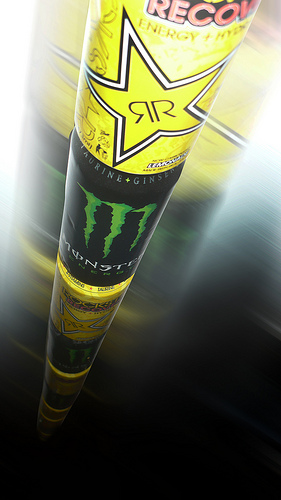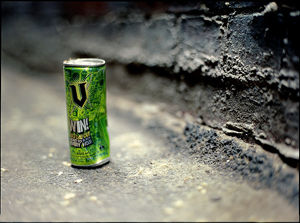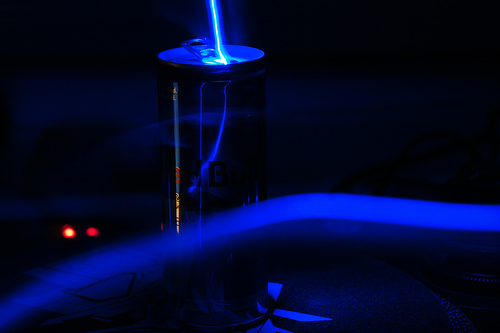The main ideas that you found in the previous section are the same ideas that you will use to construct a summary of this article. A good summary can be described in three ways:

Source: Energy Drinks, DavisAlejandro, Flickr
1. It’s short in length.
2. It tells what is most important about the text being summarized.
3. It’s written using your own words.
To begin your summary, write a sentence that introduces the author, the title of the text, and the main argument or position. This information can usually be found in the main ideas that you wrote down for chunk 1. Using chunks 2–4, address the subject as a whole by explaining the meaning and function of the author’s central ideas.
As you begin to write your summary, remember that a good summary follows these guidelines:
| Include These in a Summary | Do Not Include These in a Summary |
|---|---|
| Author of the text | Details about the main ideas |
| Title of the text | Examples, illustrations, or anecdotes |
| Main ideas of the text (a.k.a., the main ideas of each chunk) | Extended quotations |
| A clear thesis statement that expresses the main idea or intention of the author’s work | Phrases such as “The way the author does this is by . . .” or “How this happens is . . .” or “This article is about . . .” |
| Definitions of the original author’s key terms | Any opinions or judgments about what you read |
| An active voice: “The author states that . . .” |

Source: “Leaves you crushed,” mugley, Flickr
You may be comfortable with writing essays and stories where you include lots of detail and description, but in this situation you will only write the most significant information. Again, this skill is important and will help you become a better reader as you encounter more challenging texts. You won’t always be writing a summary, but you can still think about summarizing as you read so that you don’t get distracted by unimportant details and lose sight of the overall meaning of the text.
Here’s a summary of the article you read earlier:
Summary of “Teenagers Prefer Drinks with Caffeine”
The article “Teenagers Prefer Drinks with Caffeine” by Tara Parker-Pope of the New York Times looks at super-caffeinated drinks and their appeal to teenagers. She cites a study that was conducted to test whether marketing or caffeine was the attraction for teenagers.
The study appears to suggest that it’s caffeine and not the flavor that attracts teenagers; however, the study was inconclusive. Research did show that the pairing of flavor and packaging with caffeine increases a teenager’s desire for those kinds of beverages.

Source: Red Bull Long Exposure Experiment, giginger, Flickr
Look at both the summary and the original article. You might have written the summary differently; maybe I didn’t include something that you would have included. The key is to think about the most important information for the summary while leaving out unnecessary details.